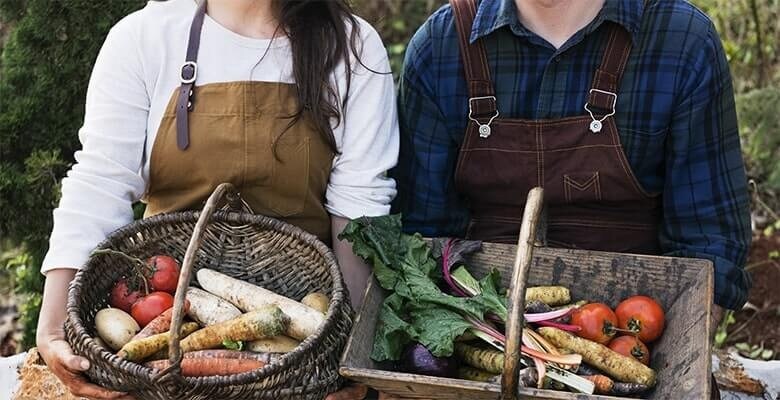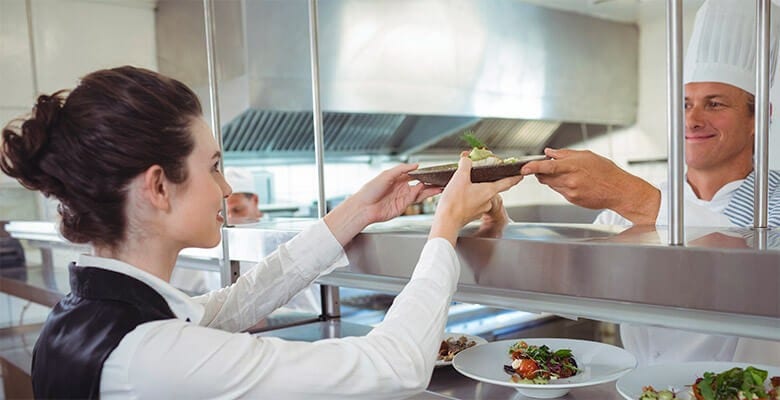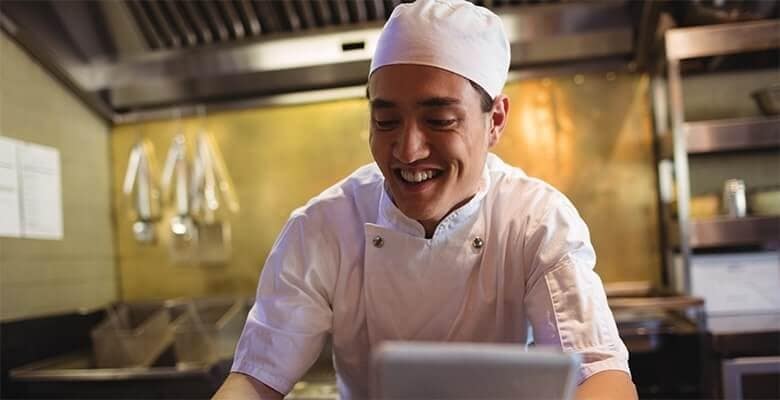COVID-19 has hit us all hard, from hardworking farmers to diligent foodservice employees. Some links of the chain are overwhelmed with food waste, and everyone is dealing with vanishing customers and diminished profits.
We’re all still learning the facts about sourcing food during COVID, but there are a few things the experts know. Let’s talk about:
- How COVID-19 has upset the balance in the foodservice universe
- How you can update your food sourcing practices through menu planning, local sourcing and more
- The answer to the question “What is FATTOM?” and why it’s more important than ever
Changes in consumer behavior continue to ripple through the US food and agricultural supply chains. You’ve probably updated your restaurant food safety guideline and handwashing guide, but what about food sourcing? How has it changed, and what should companies do now?
COVID Impacts More than your Restaurant Food Safety Guideline: How COVID-19 Has Upset Food Sourcing
It’s not too difficult to find resources on how to update your restaurant food safety guideline right now. From social distancing markers to delivery and takeout options, we’re all finding a new normal as we face COVID-19 together.
COVID has changed more than your handwashing guide – it has taken a toll on every link in the foodservice industry, from farm to table.
Before now, consumer spending on food has been predictable and stable until March 2020. Then self-quarantining began, with many people going avoiding every public sphere as much as possible.
Consumers began stocking up and eating at home more than ever before, and sales declined significantly at restaurants, fast food locations, and other public arenas.
Here are some of the disruptions COVID has caused in the food industry:
- Food-service suppliers were hit with abrupt order cancellations, leaving them with excess food stock
- Retailers, distributors and food businesses began facing growing food insecurity
- Availability for work decreased across the farming and foodservice board
- Many distributors began initiating new services like online ordering and delivery, but this wasn’t a complete solution for everyone, since these new methods can increase business costs and complications
- Foodservice distributors faced overcapacity in their storage facilities (like expensive temperature-controlled storage and equipment) and distribution networksi
- Competition for volume began putting downward pressure on prices
- Manual packing encountered challenges like physical-distancing
- Food waste began increasing
- Some farmers were forced to give up on their food and turn it into compost instead
- International food sourcing became more difficult due to various governmental precautions (and with 32% of fresh veggies, 55% of fresh fruits, and 95% of seafood we consume in the US being imported from other countries, that has taken a significant toll on the foodservice industry)ii
Business owners and managers have to determine how to change their stocking habits amidst these changes. It’s a huge task when no one knows for sure when things will return to normal (or at least close-to-normal).
Basically, outbound orders all stopped abruptly while the government shut down restaurants, whereas farmers, food-service producers and processors couldn’t possibly stop their businesses as quickly.
While everyone in the foodservice industry scrambles to adapt to supply and demand which is still changing, there are a few things chefs and foodservice employees can do to work with changes in food sourcing during COVID.
For more help and resources for your business during the pandemic, check out our Business Support for COVID article.
Steps to Streamline COVID Food Sourcing and Your Restaurant Food Safety Guideline
Along with updating your restaurant food safety guideline, you need ways to change the way you source food in this abnormal economic climate.
Collect your Data
One of the best things we can be doing for our businesses is collecting data. Since everything we’re going through is unprecedented, we have to do a lot of our own research.
Send out surveys to gauge how many customers you can expect, and which customers prefer delivery, frozen meals, or dining in. Of course, keep a record of how many customers you are getting and how quickly that number is increasing.
These numbers will help you when you talk things through with your food suppliers, and give you an idea of how much food stock you need.
Keep Open Communication with Suppliers
We are all doing everything we can to help one another right now. Keep open communication with your food distributors and let them know the kinds of trends you’re seeing. Work together to develop a food supply plan that will keep you both afloat.
 Adobe Stock Image
Adobe Stock Image
Secure your Food Chain with Local Sourcing
Bruce Reinstein believes that we will see an increase in local and domestic sourcing. Because of the hurdles that come with relying on international sourcing, local sources can be more dependable.iii
Try to connect with more local food sources – there are many farmers and distributors who need your support right now.
Changing Up Your Menu
Another trick to enhance your food security is changing up your menu.
- Use accessible foods. You can guarantee your customers the food that is still coming in from your local farmer, or the inventory you already have in stock. Change your menu up to reflect these reliable foods and recipe.
- Keep your menu simple. In accordance with the first tip, a six-page menu may not be prudent at the moment. Keep the menu simple by featuring dishes that your consumers love that you can make based on your limited staff and ingredients.
- Keep delivery and takeout in mind. We can also look over our menu items and make sure they stand up to travel. What recipes might end up looking or tasting sub-par once it reaches the consumer? Tofu Mushroom Cauli Sisig is a great meal for takeout or delivery. When you startup delivery services, it’s always helpful to go over some food safety tips with the staff (read more in the next section).
- Start offering family meals. A lot of consumers are looing for affordable and convenient family meals right now. You can make the meals ready-made or in a meal kit box form, as long as it’s more convenient for your guests to get large orders at a reasonable price.
- Get the word out! Post your menu on your website and on social media. Advertise your new changes and show off your fresh, healthy and affordable cuisine.
Other Bright Ideas
Here are a few more fantastic ways other restaurants are adapting to food sourcing and building their security:
- Creating freezer-friendly packaging for dishes along with reheat instructions – selling more to one client or family is optimal right now. Individuals who are working from home will love this option.
- Publishing a new menu each day based on ingredient availability.
- Selling group-sized drinks as some states have changed their regulations to permit alcohol delivery in order to support restaurants. Restaurants are sourcing alcohol from local breweries or alcohol vendors.
- Creating build-your-own meal kits, complete with ingredients and cooking directions. You can be creative, from smoothie to dessert kits. You might also want to package it as a fun activity to do with the family.
- Selling groceries and pantry staples. You can help out suppliers by stocking a little extra. Many consumers are actually looking for a less crowded shopping experience. Maybe you stock grocery staples so your customer can utilize your restaurant as a one-stop shop, or maybe you market some unique gourmet foods that to add some excitement to life in quarantine.iv
Once you feel like you’re on top of the root of the food sourcing issue, you can better focus on updating your restaurant food safety guideline for greater safety and success.
Food Safety Tips during COVID
- Revisit handwashing guide with employees
- Update cleaning protocols
- Define social distancing guidelines and place markers
- Train staff in new delivery standards
Read more in the next section about how to increase your consumers’ safety surrounding changes in food sourcing.
Food Safety Tips to Observe While Food Sourcing Changes
While you update your menu and change your food sourcing practices, the acronym “FAT TOM” becomes more important than ever.
COVID means we are holding onto food longer because we are selling less. Some of us are making freezer meals, and many of us are conducting takeout and delivery options. That introduces potential food safety hazards, which is why we need to address the question: “What is FATTOM?”
What is FATTOM? FAT TOM is an acronym that is a good reminder of various food safety tips.
 Adobe Stock Image
Adobe Stock Image
-
Letter
Phrase
Definition
F
Food spoilage
Any change to the food, like bacteria or mold, that causes food to taste bad or become dangerous
A
Acidity
Foodborne pathogens survive in a slightly acidic pH level (4.6-7.5), but acidity can be reduced through methods like pickling
T
Temperature
Of course, temperature spurs bacterial growth. We know bacteria thrive between 41 F to 140 F (“the danger zone”), so with delivery methods we may have to take extra steps to keep the food out of the danger zone for as long as possible
T
Time
Remove food from “the danger zone” within at least 2-4 hours, either by cooling or heating methods
O
Oxygen
Oxygen allows bacteria to thrive. Prevent oxygenation by using methods like canning and confit
M
Moisture
Bacteria requires water to survive, so moisture is related to bacterial growthv
 Adobe Stock Image
Adobe Stock Image
Once you address FAT TOM, be sure to update your restaurant food safety guideline if needed. You might also want to create a handwashing guide for your employees as their jobs evolve.
Conclusion
Good news: Foodservice business is “steadily returning” at this time, according to Robin McConaughy, and more people are ordering from restaurants again.vi
Now is a good time to work on strengthening our food security in our supply systems. We can prepare ourselves for another COVID outbreak or any other complication.
i - https://www.mckinsey.com/industries/consumer-packaged-goods/our-insights/us-food-supply-chain-disruptions-and-implications-from-covid-19
ii - https://www.bayer.com/en/news-stories/feeding-the-world-in-a-pandemic-can-food-supply-chains-cope-with-covid-19
iii - https://www.qsrweb.com/articles/covid-19-will-forever-change-the-foodservice-industry/
iv - https://blog.clover.com/covid-19-restaurant-survival-guide/
v - https://www.thespruceeats.com/six-factors-for-food-spoilage-996027
vi - https://www.cnbc.com/2020/07/17/how-small-farms-found-new-customers-during-the-coronavirus-pandemic.html